"...Minervam, quam superstitose colebat, somniavit excedere sacrario negantemque ultra se tueri eum posse, quod exarmata esset a Iove."
He had dreamed Minerva, whom he worshiped with superstitious devotion, abandoned her sanctuary and announced she couldn't protect him anymore because Jove had disarmed her.
Suetonius, Lives, Domitian XV.3
"...τὴν Ἀθηνᾶν, ἣν ἐν τῷ κοιτῶνι ἱδρυμένην εἶχε, τὰ ὅπλα ἀποβεβληκέναι καὶ ἐπὶ ἅρματος ἵππων μελάνων ἐς χάσμα ἐσπίπτειν...."
[Domitian dreamed] Athena, whose statue he kept in his bedroom, threw down her weapons only to plummet through a crack in the earth on a chariot of black horses.
Dio Cassius, Roman History, LXVII.10.1
"Which dreams indeed are ambition, for the very substance of the ambitious is merely the shadow of a dream."
Shakespeare, the character Guildenstern, Hamlet, II.2.1356
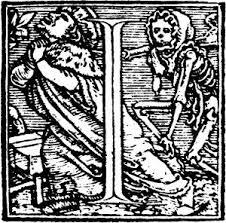 N 83, UNDER DOMITIAN'S personal direction, the Roman mint initiated a series of four Minerva reverses on regular issues of silver denarii, which would continue to be struck until the end of his reign in 96. Commonly referred to as M1, M2, M3, and M4, after the order of their appearance in the British Museum catalog, these reverses (below RIC 563, RIC 576 var, RIC 519, and RIC 339) reveal the Roman goddess Minerva in four different aspects.
N 83, UNDER DOMITIAN'S personal direction, the Roman mint initiated a series of four Minerva reverses on regular issues of silver denarii, which would continue to be struck until the end of his reign in 96. Commonly referred to as M1, M2, M3, and M4, after the order of their appearance in the British Museum catalog, these reverses (below RIC 563, RIC 576 var, RIC 519, and RIC 339) reveal the Roman goddess Minerva in four different aspects.

Today I would like to write about the image on the M3 reverse (third from the left). As I have expressed in a previous blog article, it is my contention that these images are not merely poses or aspects but representations of various temple cult statues in Rome. However there are problems with M3.
First let me try to explain how inappropriate it is for Minerva to appear carrying Jupiter's thunderbolt. It is not Minerva's attribute. It doesn't serve to identify her. It's unwieldly in her arms. She holds it awkwardly. It actually makes her look sort of ridiculous. This is Superman with Batman's utility belt. This is Jesus Christ with a prayer wheel. Fanciful, open to interpretation, and narrowly personal, qualities shared with a dream, this must be how Minerva appeared to Domitian--in a dream. In fact, legitimized through the dream-state, something the ancients respected, it is the only way this image escapes sacrilege. M3, what I call the "Flavian Minerva," is a dream manifested!
So then, if this is true, how does M3 fit in the series of cult statues? Particularly, where was her temple?
When Augustus built the Curia Julia, Rome's new Senate house, he ordered that a statue of Victory be placed on the roof's peak. There is numismatic evidence of this. By the time of the Flavians, this statue had been removed downstairs to the colonnaded porch attached to the northwest side of the building. The porch is shown below between the Curia itself on the right and the Senate office building, the Secretarium Senatus, on the left, although the Secretarium wasn't added until a later date (Gilbert Gorski's reconstruction, The Roman Forum: A Reconstruction and Architectural Guide, Gorski and Packer, New York, 2015).
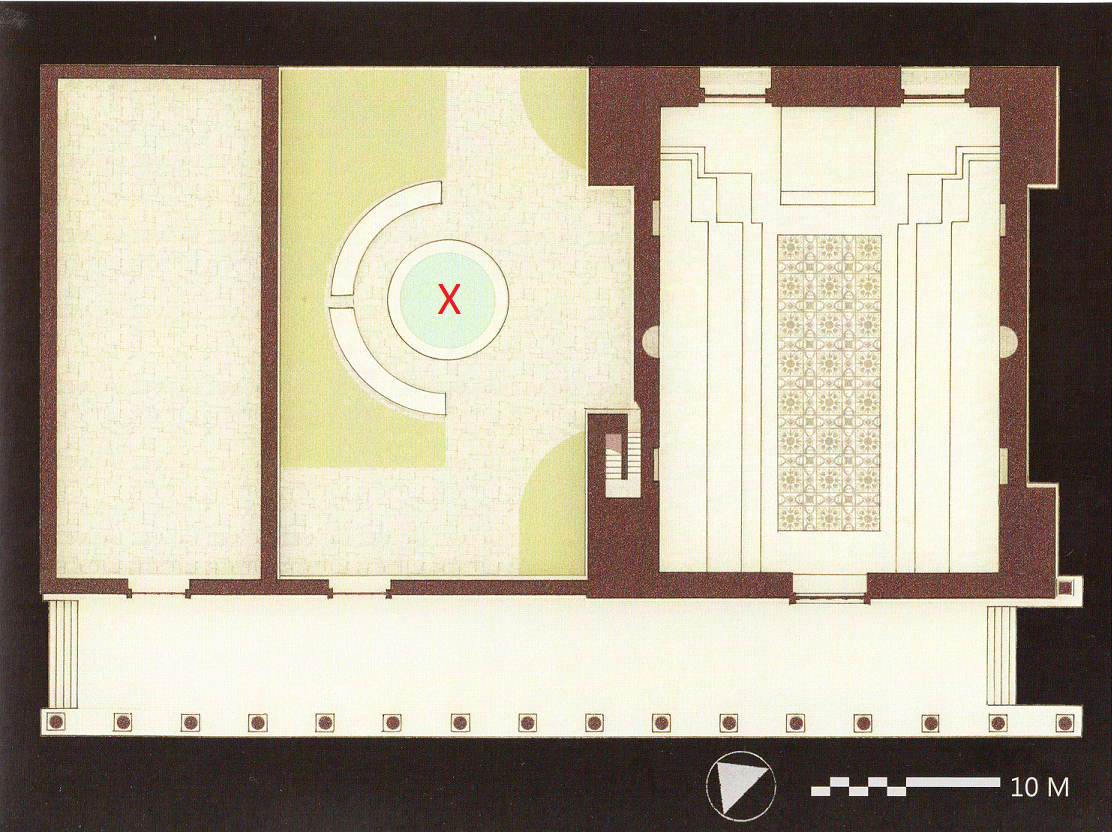
When Domitian became emperor he removed the statue of Victory back to its original position on the roof and installed a statue of Minerva in its place on the porch, the so-called Atrium Minervae. (I have added a red X to the diagram to mark the statue's possible location, right in the center of the atrium pool.)
These are the facts that we already know.* Exactly which statue it was, why it was put there, and where it ended up after that is all a mystery. What follows is my own speculation--
After the death of his father and the ascension of his brother to the throne, by this action establishing the Flavian dynasty, I believe that Domitian had a dream where the goddess Minerva appeared to him with a weapon that wasn't appropriately hers to wield. Along with her own spear and shield she carried a thunderbolt, the attribute of her father Jupiter.
What could this mean? Like many of the inhabitants of the Caelian Hill where Domitian was born, the Flavian family descended from the Sabine people, and it was the Sabines who brought the worship of Minerva to Rome. Minerva belonged to them. At the same time the current emperor of Rome was a Flavian, and the emperor was considered to represent Jupiter on earth. Could this melding of Jupiter and Minerva, this Flavian Minerva, become the emblem of the dynasty? It was certainly worth striking a coin to find out, but first Domitian would have to submit his proposal to the master of the mint.
"No!" Claudius Etruscus put his foot down, as much to thwart the upstart prince as for cause, but there was something preposterous about the request, wasn't there? "Minerva with Jove's attribute! It's an outlandish juxtaposition. What's next, dogs marrying cats?"
Domitian had no recourse but to appeal to his brother the emperor.
Now Titus had always had a hard time understanding his half-brother. The younger man lived too much in his own head, in Titus's opinion. Half-heartedly, the emperor had offered to convoke the popular assembly, on some vague but auspicious day in the future, for the express purpose of awarding Domitian tribunican powers. This would by tradition designate Domitian his heir. But Domitian had shrugged the matter off as unimportant, the task was left undone, and that suited Titus just fine. Still the young fellow was a good poet by all reports. There was that in his favor at least.
Titus signed the order. "We're going to indulge the lad on this point, Mint Master. It's, um, it's a poetry thing." Claudius Etruscus smirked at this. Domitian would remember that smirk.
Here, from the collection of Alberto Tricarico, is an early example of the Flavian Minerva from the reign of Titus, struck in Domitian's name--
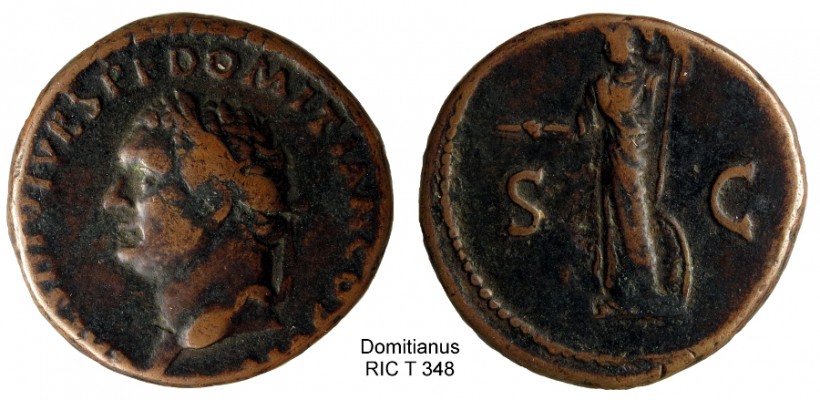
It is my opinion that immediately upon his ascension to the throne Domitian commissioned his dream statue in gold or chryselephantine (ivory, jewels, and precious metals). He then ordered the mint to use the artist's preliminary study, the maquette, as a model for the coinage in 83. Later the actual statue, installed in the Atrium Minervae, became the model for the coinage. Meanwhile Domitian retained possession of the maquette and kept it enshrined in his bedroom for personal devotion.
Behind the Curia and on the open end of the Atrium Minervae there is a portico surrounding the Forum of Julius Caesar. The reason that this is worth mentioning is that there seems to be confusion among modern writers between the Atrium Minervae and a structure within the eastern colonnade of this portico, called the Chalcidicum. It isn't likely (for reasons I hope to delve into in a future blog article) but it's possible that the Flavian Minerva was first installed here in the Chalcidicum (indicated by a red Y below) and not in the Atrium Minervae after all, since the very existence of the porch during the time of Domitian is slightly problematic.

The diagram above is from a terrific new edition to my library (Andrea Carandini, ed., The Atlas of Ancient Rome: Biography and portraits of the city, Princeton and Oxford, 2017). It shows the area behind the Curia as it appeared in 113. Note that the Atrium Minervae is missing from this reconstruction.
In either case, neither the Atrium Minervae nor the Chalcidicum was ever intended to be the Flavian Minerva's final destination. Domitian had commissioned the Flavian Minerva not for display but for worship, and he needed to put it into a temple for that to happen. So just a few steps to the north of the Curia, adjacent to his father's Temple of Peace, the city's art gallery and widely-proclaimed most beautiful building and grounds in Rome, Domitian built a new temple to house his statue. According to Eve D'Ambra (Private Lives, Imperial Virtues: The frieze of the Forum Transitorium in Rome, Princeton, 1993), "The interior of the temple is indicated in a fragment of the Marble Plan, FUR 16a, that shows a cella lined with lateral colonnades and ending in an apse, most likely with a niche for a cult statue." (My italics.) Here is the fragment of the third-century Severan Marble Plan--
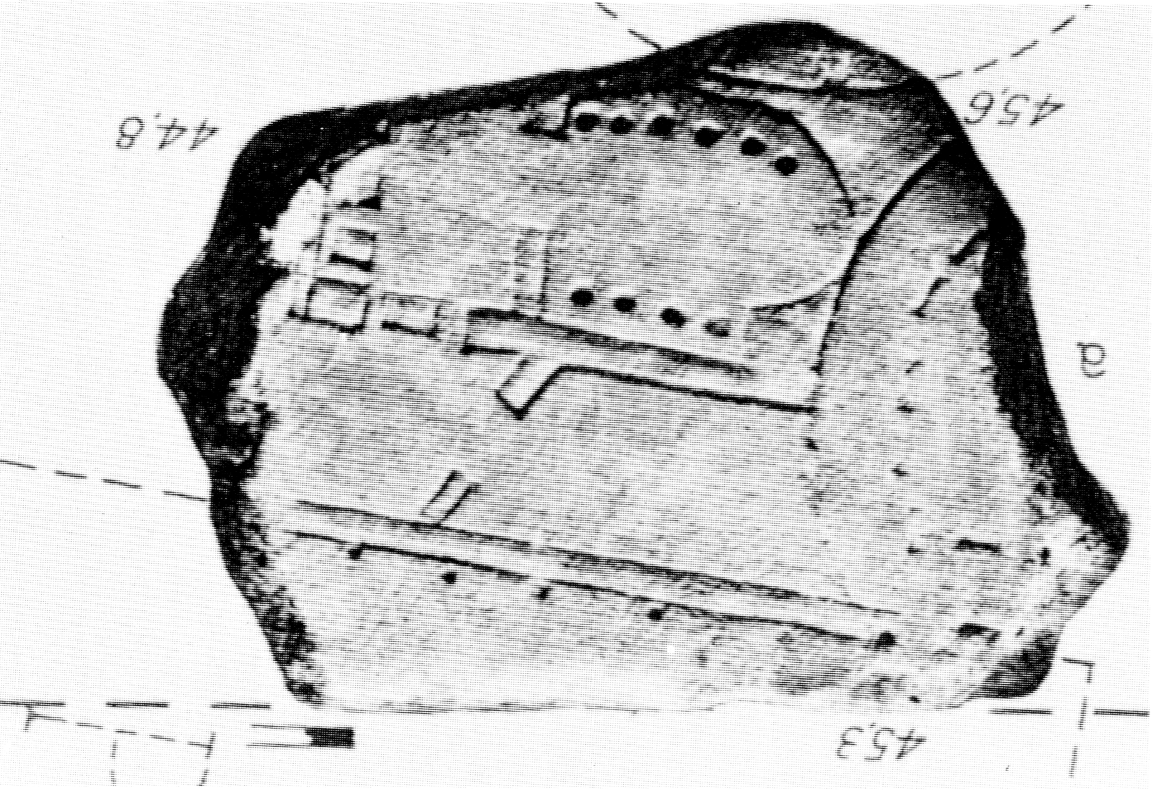
Here is a reconstruction by P.H. von Blanckenhagen of the Forum Transitorium with the Temple of Minerva at the right--
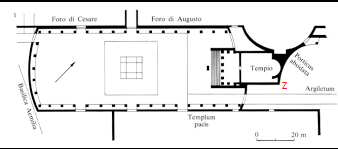
Note the niche above in von Blanckenhagen's reconstruction (indicated by the red Z). This niche was created in a certain size and shape, which means that the niche was created for a statue of a certain size and shape, the Flavian Minerva, which means that the temple was created to contain the statue, and not vice versa.
In assigning the statue depicted on the M3 reverse to the Temple of Minerva in the Forum Transitorium, I am taking something of a leap. Is there any evidence for this connection, physical, literary, or epigraphic? None that I could find. However, on the one hand we have an important new temple in need of a cult statue and, on the other, an important new statue in need of a home. The leap seems reasonable to me. The lack of physical evidence of any statue at all suggests that it was constructed of precious materials, as I have already stated. The final diagram shows all three relevant sites and their proximity to one another--
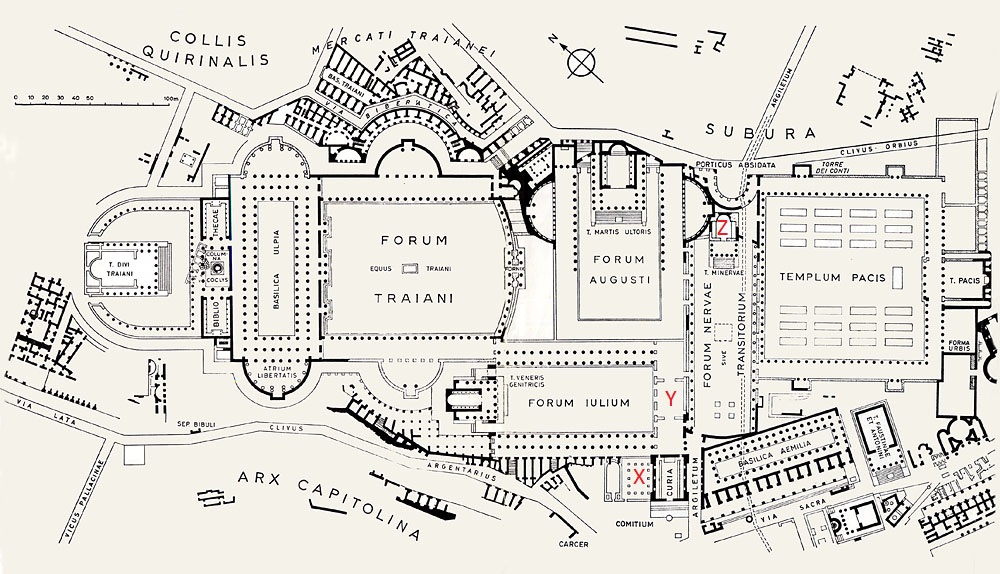
Now, we know that the temple was already in operation early in Domitian's reign. By 86, according to the poet Martial, who uses the temple as a landmark when giving directions to his bookseller's (Epigrams, 1.2.8). Beyond that, however, the chronology is fuzzy. It occurred to me that the way M3 is portrayed does seem to change over time, the costume details and the angle of the thunderbolt, for example, and that this might be explained by the engraver progressing from mind's eye to maquette to finished statue. Perhaps, I thought, this might help to date the statue.

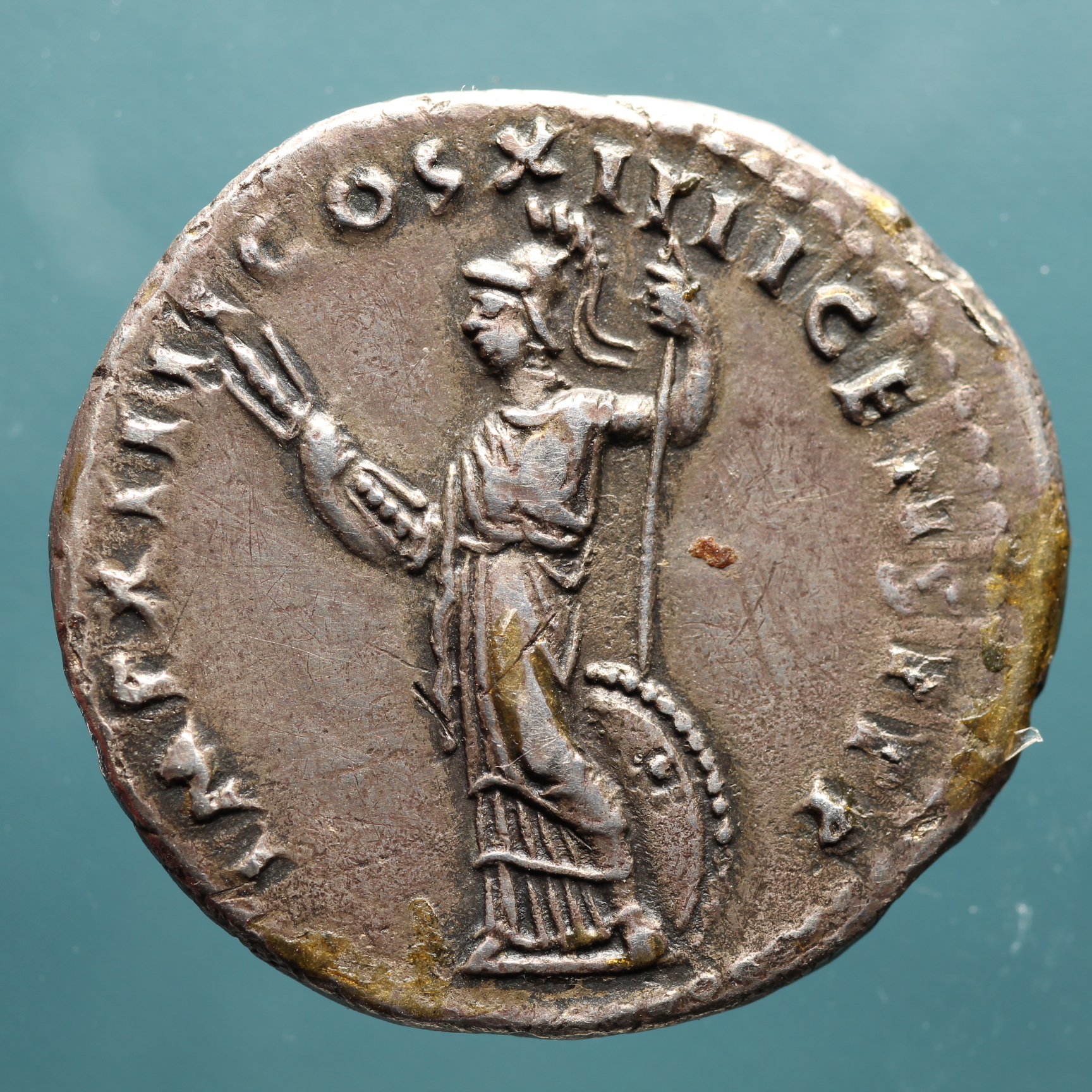

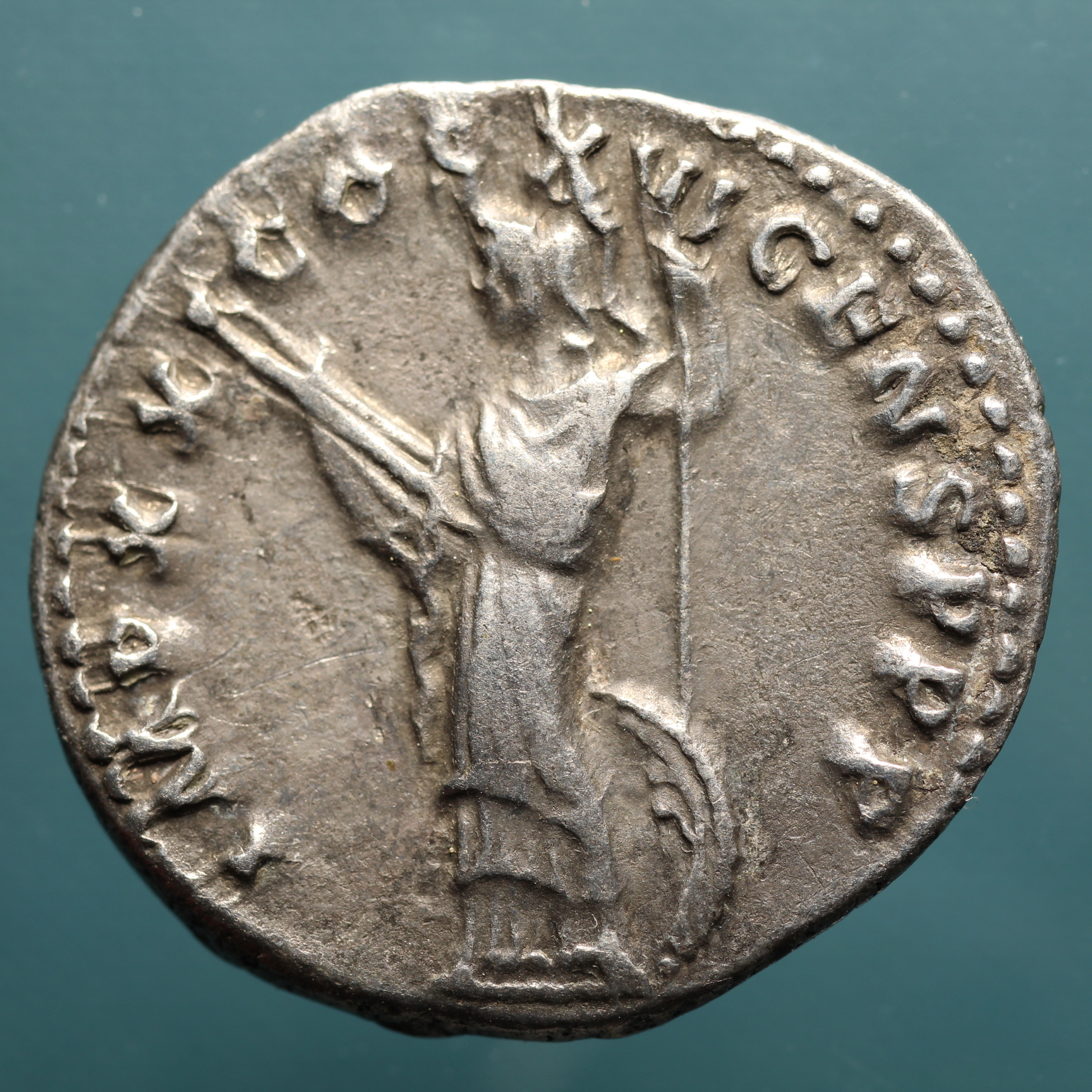
I asked David Atherton, noted collector of Flavian silver, for his opinion about this. He observes "a turning point in the overall style of the denarii around 88/89." However, according to Mr Atherton, "that observation is not connected to any particular type. Before that point, both the portraits and the reverse types were mostly more refined. Afterwards, the quality control began to slip a bit, and the portraits are not as elegant and the reverses more simplified." He attributes the change, perhaps, to less personal vigilance on the part of the emperor.
Mr Atherton is probably correct. However I am not totally convinced that there isn't more to the story, at least regarding M3, and I intend to look into this matter further. The most reasonable chronology, in my opinion, regardless of any stylistic differences in the coins, is that the statue was completed very early, by 83, and that its public reception provided the impetus for the denarius issue.
Finally we return to the two quotes at the beginning of this article. Dio Cassius is prone to embroidery, and Suetonius's version seems more credible to me. Suetonius never heard a rumor he wasn't happy to pass along; however he wasn't inclined to make things up out of whole cloth, so I am willing to believe what he reports about the dream. On the other hand, Dio says something outright that Suetonius only hints at. The statue in the dream is the same one that's in Domitian's bedroom. ἐν τῷ κοιτῶνι, Dio is referring to the maquette of the Flavian Minerva.
As Suetonius reports, Jupiter himself disarmed Minerva. But how did he do that? One god didn't have that kind of power over another god. No, but Jove could take back what belonged to him in the first place, his thunderbolt, and that's exactly what he did do. In fact Nerva did something along the same lines after Domitian was dead--this explains how he could dedicate Domitian's temple as brand new a decade after it was already up and running (CIL 6.953). It was he, Nerva, the succeeding representative of Jupiter on earth, who stripped the thunderbolt from the arms of Domitian's cult statue, destroying the dream of the Flavian Minerva forever. The image would never appear again on any coin, except once, oddly on a cistopheric issue belonging to the reign of Hadrian. (I have not yet determined the significance of this.)
*I read all about this recently while researching the Aventine Minerva (M1 and M2), but I wasn't taking notes, and now I can't remember what book I read it in. It was in my own living room, I remember that much, and it had to be in one of a dozen books on the subject on Roman topography in my own library. In trying to find it again in order to instantiate it in this article, I have tried to retrace my steps in all of these books, but of course I can't find it now to cite it, nor can I find anything to back it up in any of my source materials. Perhaps it was all a dream--which would be ironic considering what this blog article is about--but I'm pretty sure I wasn't dreaming. In fact, the story would certainly explain why (at least as early as Hadrian) that the porch would still be referred to as the Atrium Minervae.
* * *
Similar to last month's article, this is a reprint of a blog article that appeared over a year ago on this website and then was lost in the reformat. Since I haven't changed my opinion about this reverse, since I want this article to be included in my blog record, and since it is part of the current series of Minerva reverses on Domitian's denarii, I have decided to repost the article word for word.
Next week: "Tap, tap...tap," a look at a very interesting M3 denarius.

